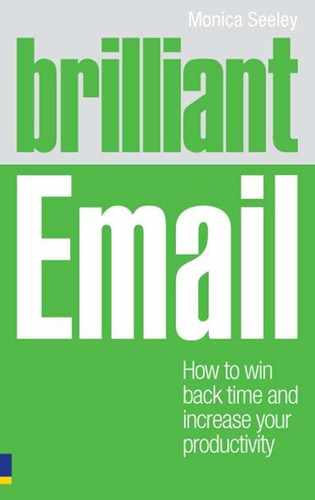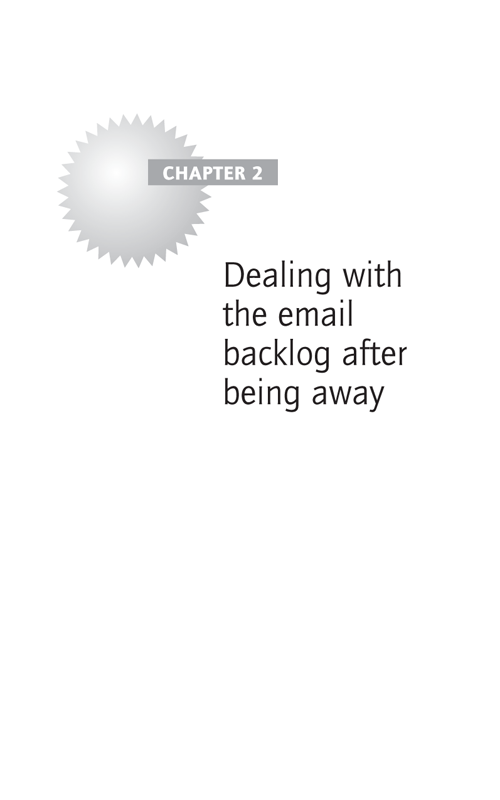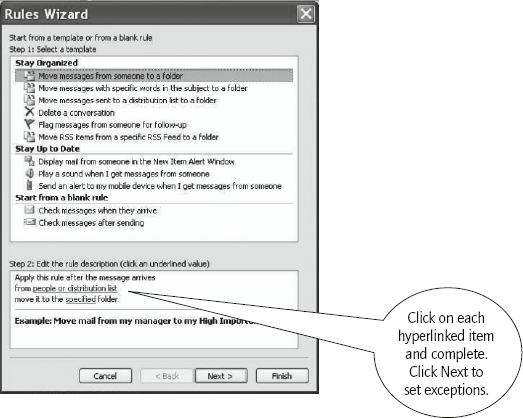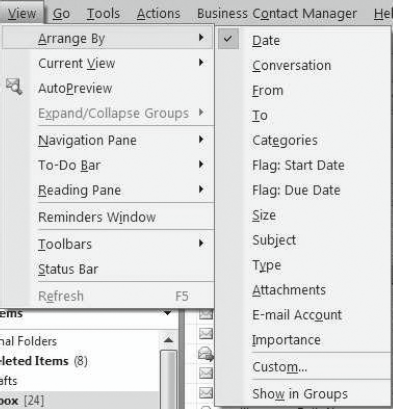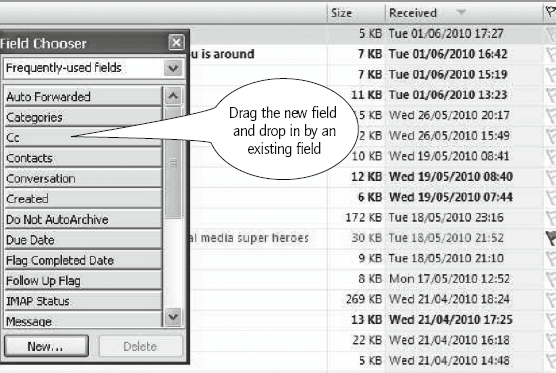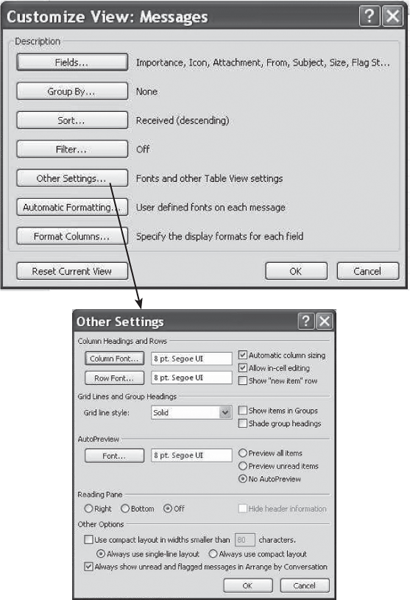Sidney J. Harris
This chapter will help you avoid being deluged with email when you are away from the office or on leave. In particular, you will learn some smart, timesaving ways to view your inbox.
Should I switch off or keep checking email when I go on leave?
This question comes up time and again from people, whether or not they have an assistant. A survey I conducted showed that 50 per cent of executives logged on while on leave (see www.brilliant-email.com). Not because their business expected them to, but because they felt they must. Is this addiction or fear of missing out? Chapter 6 deals with email addiction.
Email is one of the great stress-creators of modern 21st-century office life. Perceived wisdom used to be ‘leave email at home when you go on holiday’, but with the advent of our 24/7 society and the merging of work and leisure this is changing. Professor Cary Cooper, the stress management guru, says, ‘Logging in on holiday destroys the main purpose of taking a break, namely to rest, relax and unwind.’ His advice, which I endorse, is ‘If you absolutely must check your email while on leave then only do it once at the end of the day. Don’t ruin your family or friends’ day by logging on during the morning. If you can resist then wait until the last day of your break.’
Smart ways to view the inbox – especially after being out of the office
One of the frequent questions I am asked is, ‘When I have been out of the office for a week or even a day or two, what is the best way to sort the pile of emails in the inbox?’ The first and most important step is to make an appointment with yourself to deal with your email. Block out the first hour or two on your return to sort your inbox.
Before you go on leave or out of the office for a day, make sure you have used ‘Rules’ (see below) to automatically move newsletters and non-important emails to folders.

To set up a ‘Rule’ to move emails automatically to a folder, go to ‘Tools/’Rules and Alerts’ and click on ‘New Rule’ and follow the ‘Rules Wizard’ (Figure 2.1). Pick the type of ‘Rule’: for example, move messages from someone to a folder and then click on the hyperlinked portions in Step 2 and complete. Then press ‘Next’ to set any exceptions until you come to the ‘Finish rule set-up’ page: make sure you have ticked the box marked ‘Turn on this rule’ and press ‘Finish’.
On your return, to sort and deal with all the emails that have accumulated in your absence, first decide on the best way for you to sort them. For example, look for chains and multiple emails on the same topic and group them together in date order. You then only need to read the most recent missive and delete the rest. Below are some more timesaving ways to quickly sift your inbox and keep to the ‘Four Ds’ principle of handling each email only once.

Sort by:
In Outlook you can sort with two columns. Sort first by the main column (such as ‘Date’), then hold down the shift key and click on the second column. Alternatively use the ‘Show in Groups’ view – see Figure 2.2.
Previews and reading panes
As discussed in Chapter 1, the major drawbacks of these previews and reading panes is that they lure you into cherry picking. Nonetheless, if you have used ‘Rules’ to sort emails into folders, the preview/reading pane can be most useful when you are looking through a folder of lower-order priority emails (newsletters, out-of-office messages, etc.).
Changing your view
Another easy way to sort your inbox is to change how it looks to suit you. For example:
- Add other columns – for example, ‘Cc’ to show who else is copied in.
- Filter the inbox – for example, to show only emails where you are in the ‘To’ line.
- Categorise emails – for example, by project, person, topic.
- Make fields editable in situ. If someone keeps sending emails with the same subject line you can enable the subject field to be editable and change the subject to something more meaningful for you.
Not all software and versions offer the same level of sophistication.
In Outlook, to view emails by new fields/columns (for example, ‘Cc’) right-click on any existing field and pick ‘Field Chooser’ (Figure 2.3). Pick the required field (for example, ‘Cc’) and drag and drop it beside an existing field. Then you can sort on the new one.
To customise other aspects of how you view your mailbox, go to ‘View/Current View/Customize View’ and then select the required field. For example, to make fields editable in situ, select ‘Other Settings’ and tick the box marked ‘Allow in-cell editing’ (Figure 2.4).
- Use the functionality of your email software to change how you view your inbox (and associated folders). This will make it easy for you to process your emails, especially if you have a backlog after an absence.
- Take time out from dealing with your email, especially when you are on leave. Remember that it is OK to switch off your BlackBerry, iPhone and other such devices.
- If you must check your email while on leave, then only do it once at the end of each day or on the day before you return to the office.
